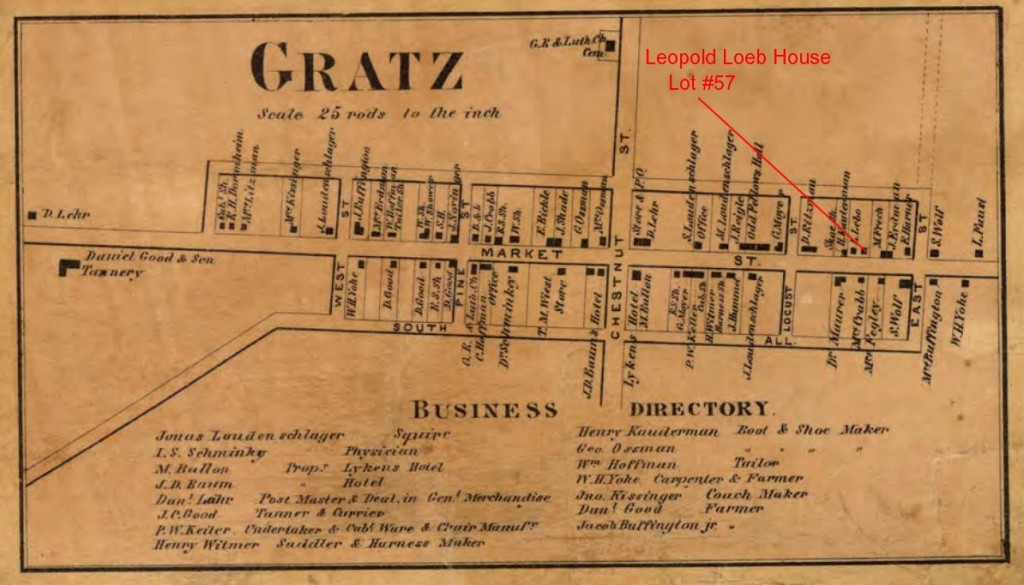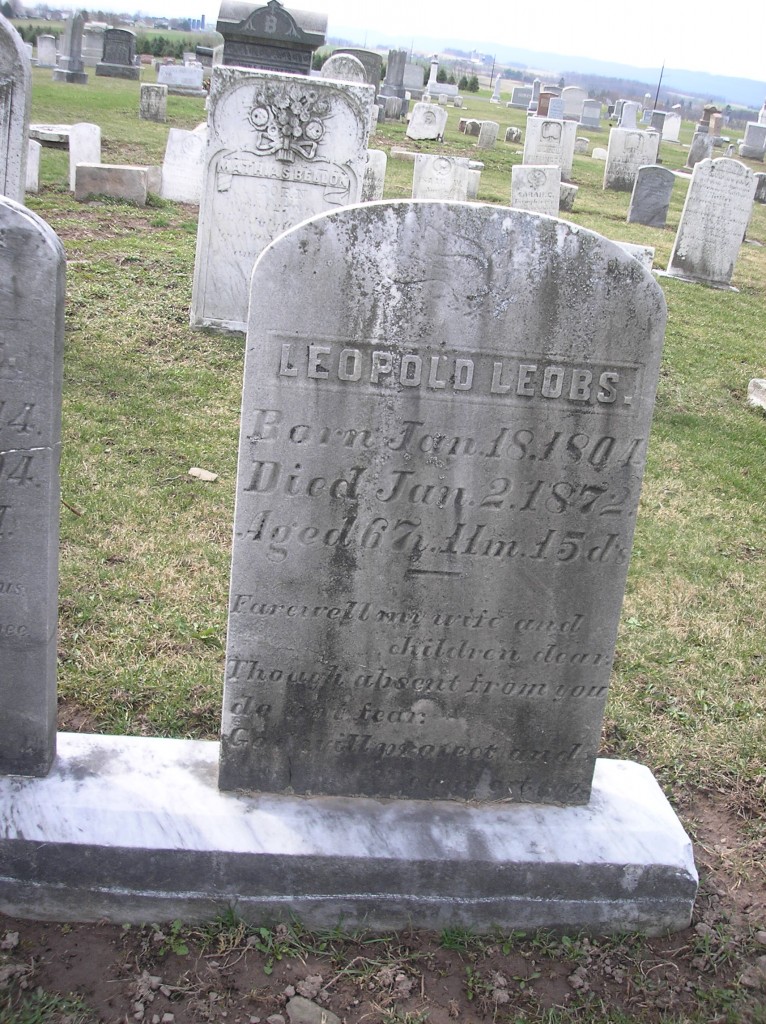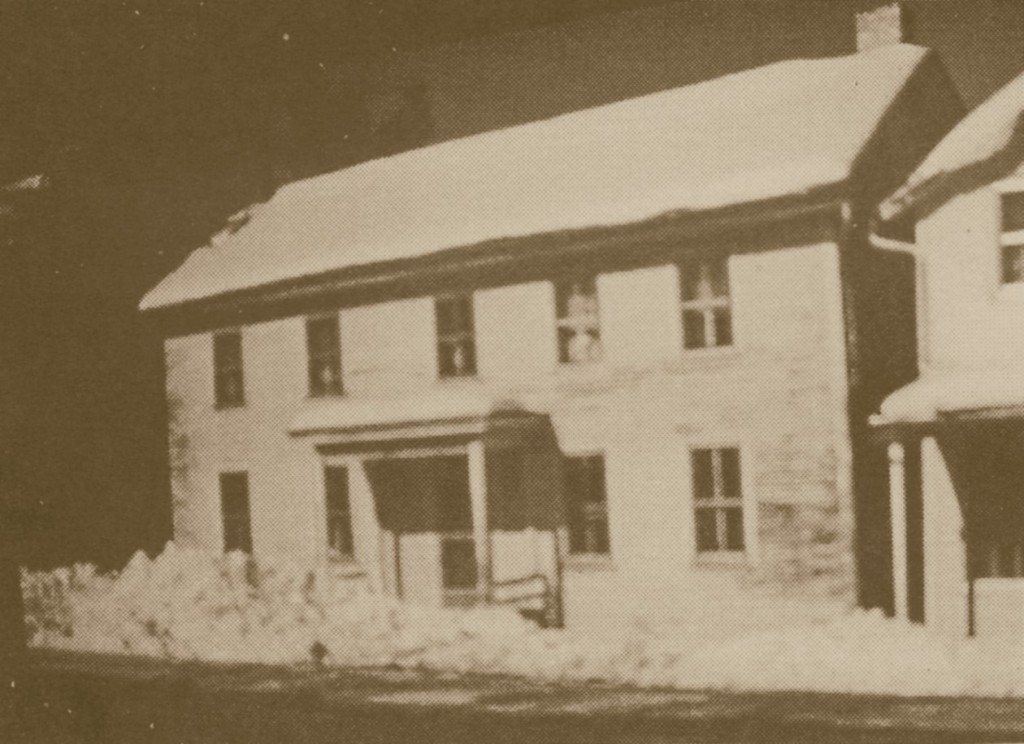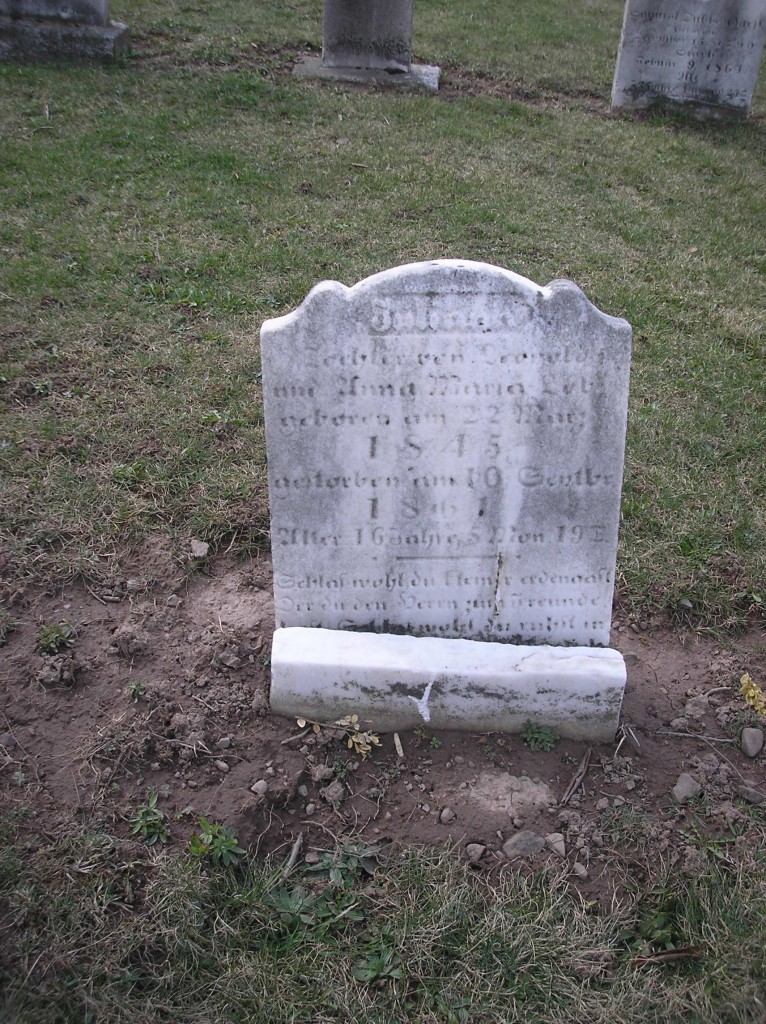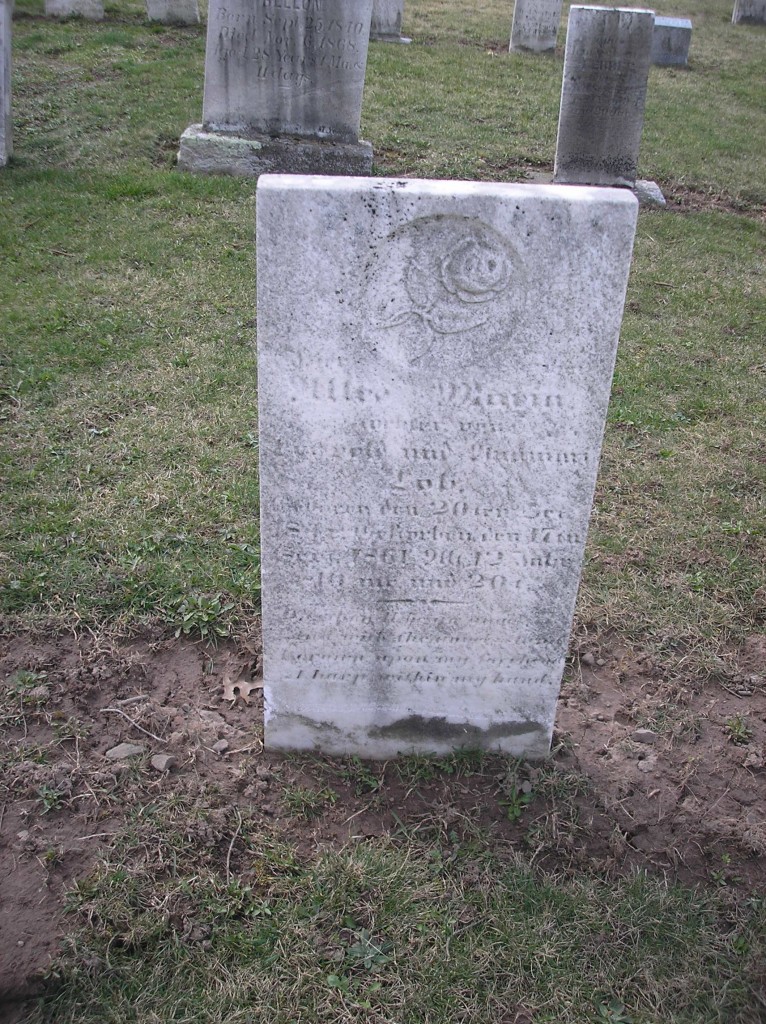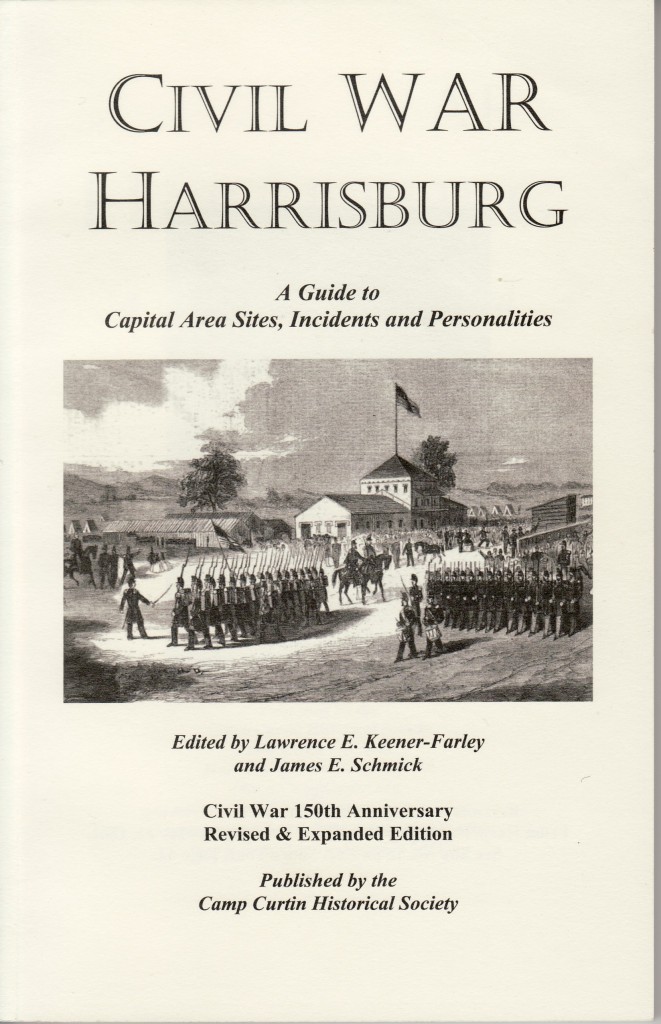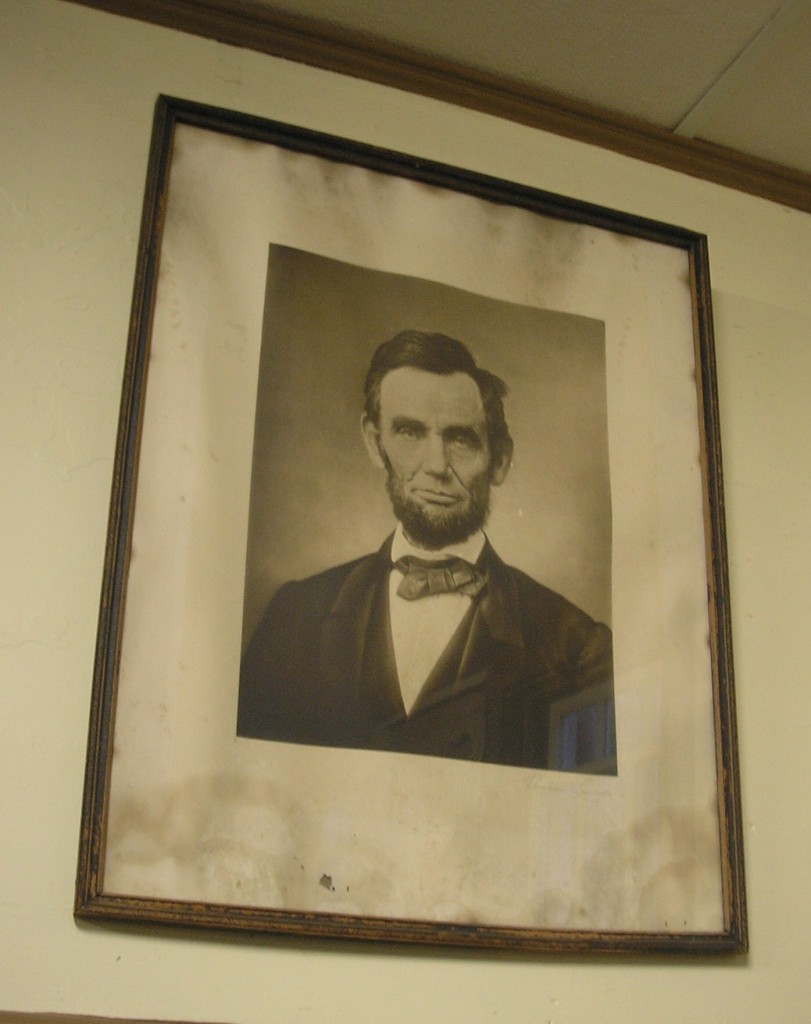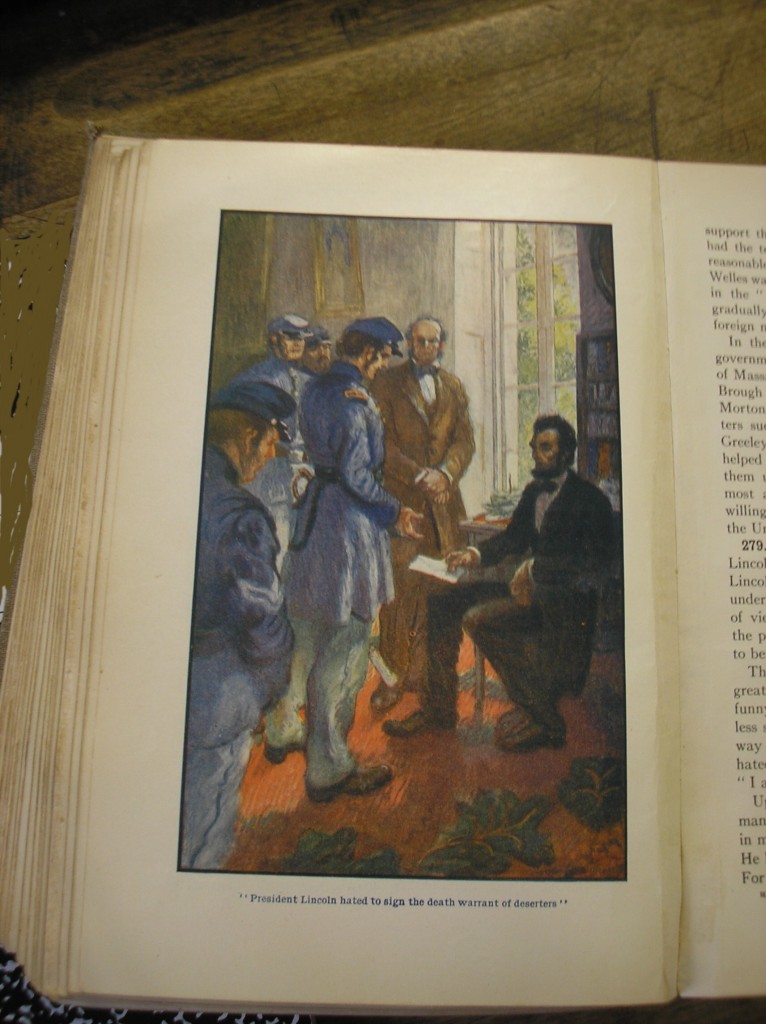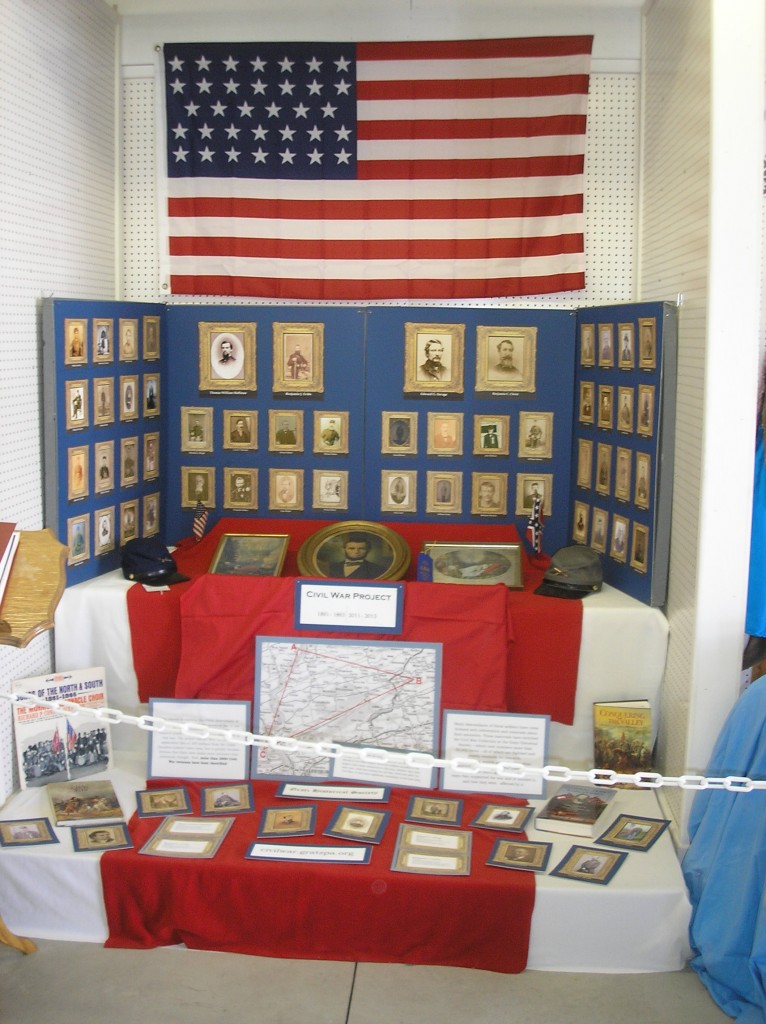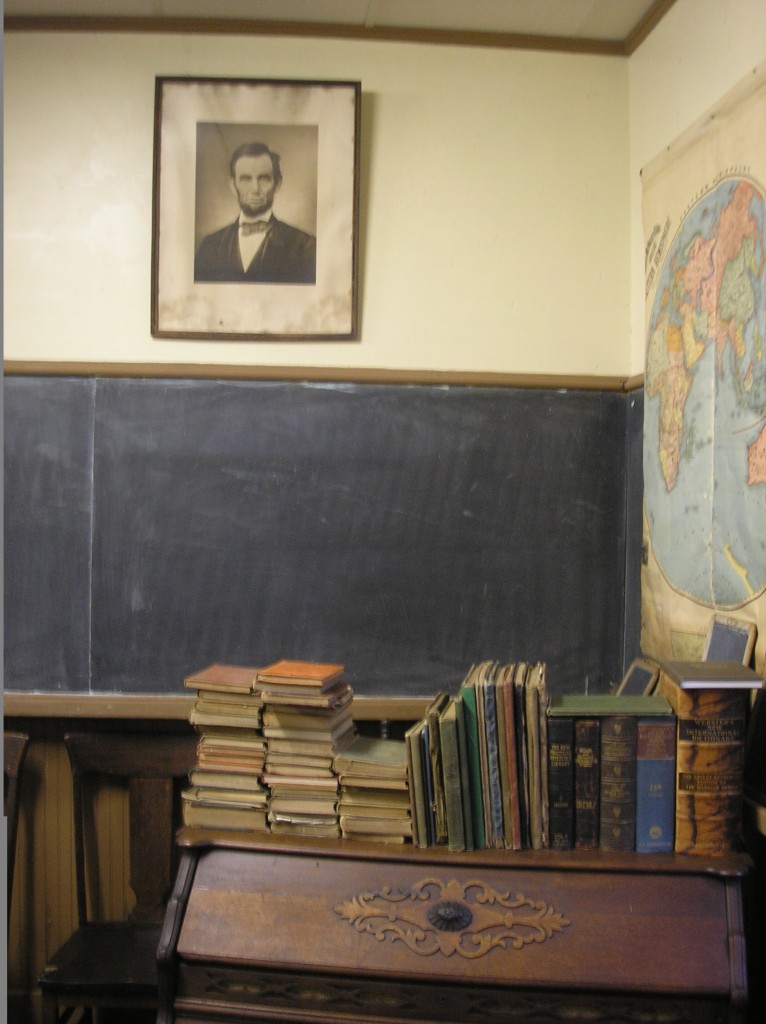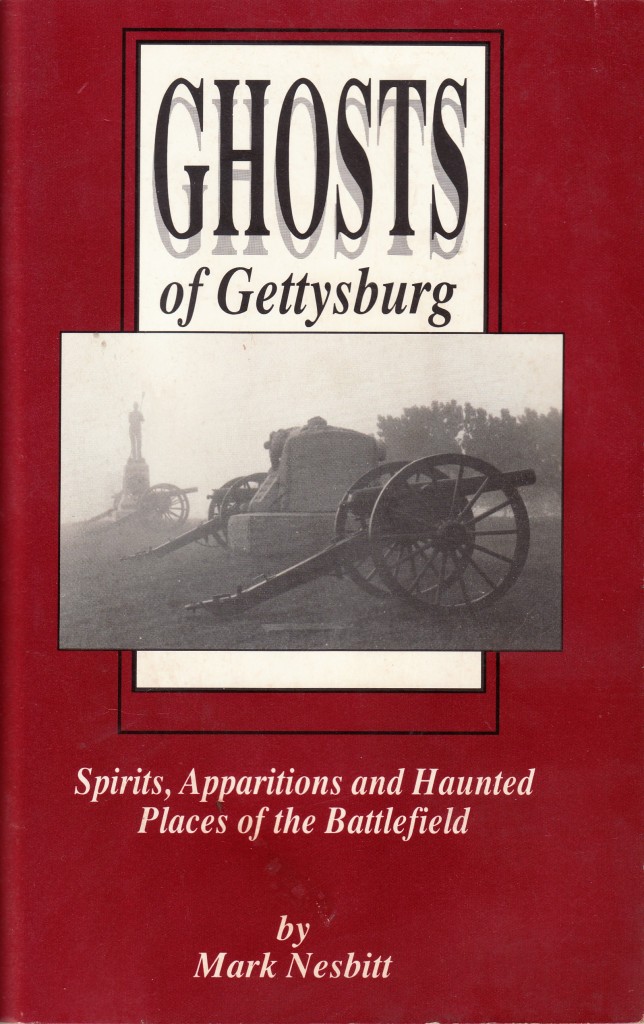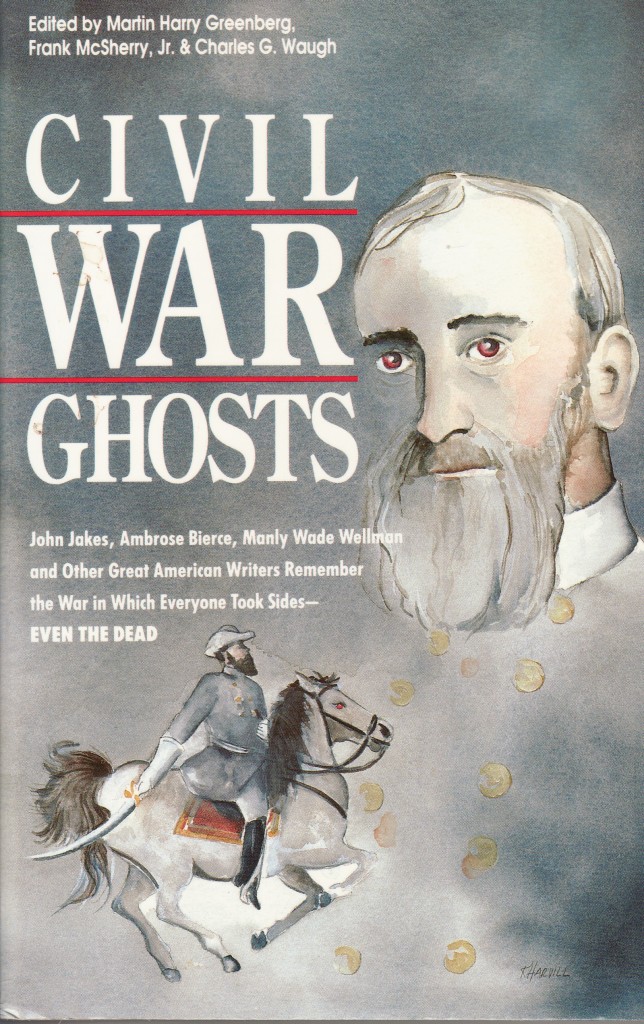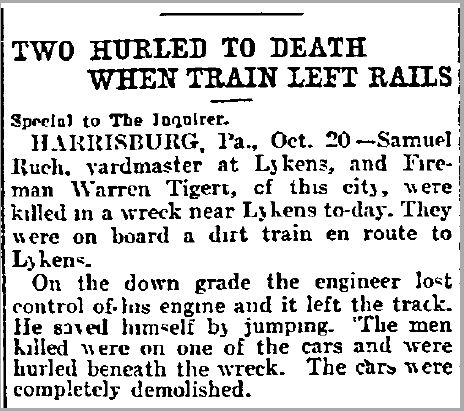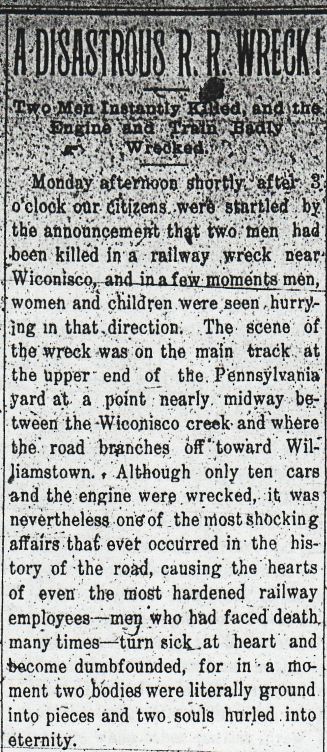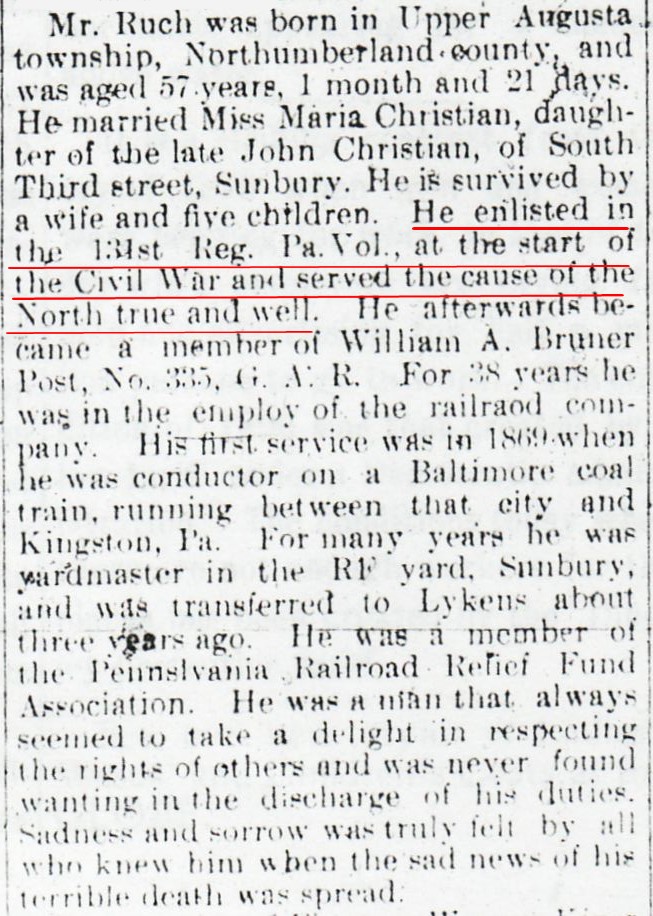Gratz During the Civil War – Leopold Loeb House
Posted By Norman Gasbarro on November 3, 2011
This property, known as Lot #57 of the original Simon Gratz subdivision, was held by the heirs of Simon Gratz until 1844 when it was sold to Jacob Buffington (1801-1880) and Catherine [Schadle] Buffington (1807-1869), but they only kept the property until 1848 when they sold it to Leopold Loeb. Loeb was the owner during the Civil War years and after his death in 1872 the property was bequeathed to his wife Anna Maria.
This branch of the Buffington had other connections in Gratz, unrelated to this property. One of their daughters, Catherine Buffington (1844-1877) was married to Civil War soldier Edmund Umholtz (1843-1882) and had two children with him during the Civil War, Milton Umholtz (1861-1878) and Henry Oscar Umholtz (1863-1850). Later she married Aaron Hopple (1847-1891), also a Civil War veteran. Catherine and Aaron are buried in the Sweitzer’s Memorial Cemetery in Berrysburg. Catherine’s first husband, Edmond Umholtz, died of small pox in 1882 and was believed to be responsible for starting the small pox epidemic in Gratz in 1882. For more information on Edmond Umholtz, see previous post, Descendants of Philip Keiser. At this time, the Umholtz and Hopple connections to the Civil War are the only ones that have been discovered in the descendants of Jacob and Catherine Buffington, but since Jacob was a direct descendant of the Buffington pioneers of the Lykens Valley, he had many cousins who served in the war. See previous post on Buffington family in the Civil War.
Leopold Loeb (1804-1872) was born in Germany and was married to Anna Maria Rissinger (1814-1904) of Lykens Township. A house on this property was built around 1850 by Leopold Loeb. It was demolished around 1985, being in such poor condition and not possible to be rehabilitated.
The earliest available picture of the house on this property was probably taken in the middle of the twentieth century and is shown above.
Leopold became a naturalized citizen in April 1837. He married Anna Maria Rissinger some time around 1835. With Anna Maria, he had at least five known children, all girls, all of whom were raised on this property. Tragedy struck the Loeb family when two teenage daughters died in 1861 during the time of the Civil War. The daughters, Juliann, aged 16, and Maria, aged 12, are buried in Gratz Union Cemetery. None of the surviving daughters married anyone who served in the Civil War, although all were of the age of possibility for service.
Leopold Loeb had various occupations throughout his life. He was first a farmer in Lykens Township and then did a stint as a huckster. After he moved to Gratz, he was a liquor rectifier and a butcher, activities which he probably pursued from this property.
This is part 23 of an ongoing series on Gratz during the Civil War. Some of the information for this post was taken from the book A Comprehensive History of the Town of Gratz Pennsylvania.
 ;
;
